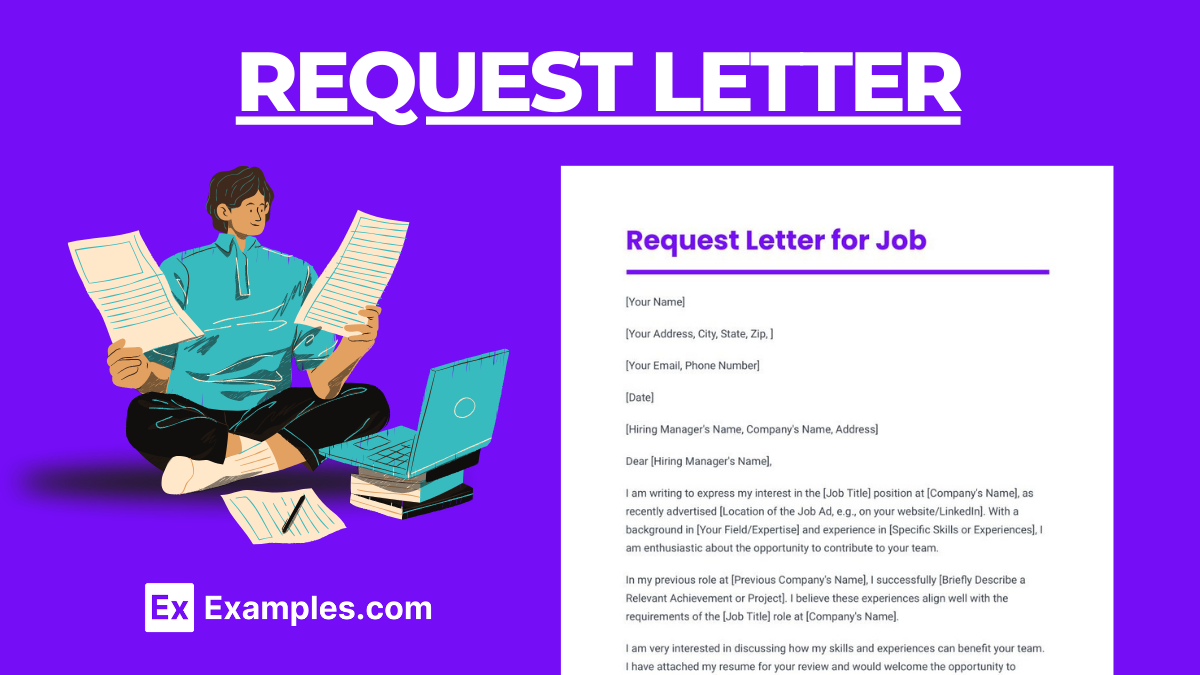85+ Request Letter Examples to Download
Crafting a persuasive Request Letter is an essential skill in both professional and personal contexts. This guide, complete with practical letter examples, provides a roadmap for composing effective and impactful request letters. Whether you’re seeking information, assistance, permissions, or specific actions, understanding the nuances of a well-written request letter is key. Learn how to structure your letter, use the right tone, and convey your request clearly, increasing your chances of a favorable response.
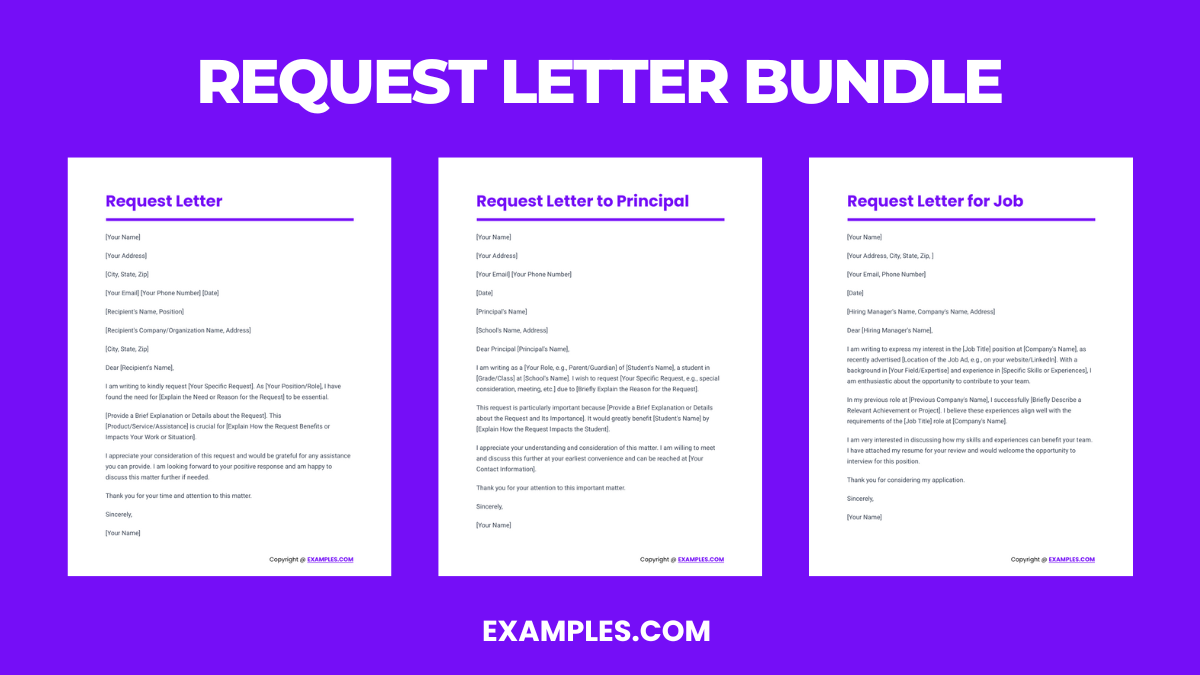
Download Request Letters Bundle
Regardless if you are in the academe or corporate world, you will need to ask permission to acquire certain things. Some may even require you submit a document to record what you have ask permission to use or acquire. In this case, you need a request letter to explain what you need and why you need it. A request letter is written when a person wants approval to a certain demand or appeal. It helps explains why explains all the details about the request to the recipient.
Request Letter Format
- Sender Details
- Your Name
- Address, City, State, Zip
- Email & Phone
- Date
- Recipient Information
- Name, Title/Position
- Company/Organization
- Address, City, State, Zip
- Greeting
- “Dear [Recipient’s Name],”
- Introduction
- Briefly introduce yourself and state the purpose of your letter.
- Request Details
- Precisely outline your request with specifics (dates, amounts, identifiers).
- Rationale
- Explain the significance and mutual benefits of your request.
- Action Plan
- Suggest next steps, mention deadlines, and offer further assistance.
- Closing
- Express gratitude and hope for a positive outcome.
- Signature
- Your Signature (if sending a hard copy)
- Typed Name

Example of Request Letter
Elements of a Request Letter
A good request letter will let you get the approval that you need. If a request letter is written coherently well, it can express your intentions clearly and let your recipient understand why there is a need for you to acquire what you have requested. Furthermore, it can be your way to getting what you have requested for. To help you with that, here are the essential elements your request letter must contain:
1. Good introduction: Since this is still a letter, you need to make sure you have a great introduction. Your introduction should immediately explain the purpose of the letter, which is to request of something from the recipient. Aside from that, it provides background information about the request.
2. Comprehensive body paragraphs: The following paragraphs of your letter must comprehensively provide supporting information about your request. You must be able to provide specifics about your request like the actual name, quantity, date, and so on. Although it should be short, provide as much pertinent information you can.
3. Courteous tone: Since you are asking permission or seeking approval for your request, it is important to use a courteous tone in your letter. Make sure you don’t sound demanding and bossy in your letter; otherwise, it would be really disrespectful to the recipient. Remember, this is still a formal letter, adhere to its standards.
4. Good formatting: As a formal business letter, make sure you follow the proper formatting. Your request letter must have all the necessary contents and follow the most convenient formal letter format. Your letter must have proper margin on all sides, addresses must be placed where they should be, and so on.
5. Professional language: As mentioned, a request letter is still a type of a formal business letter; therefore, the language you use should be professional in letter. Avoid using jargon and overly technical words. In addition, make sure you avoid abbreviations unless it is the preferred way to spell things out.
Request Letter Samples
Request Letter To Principal
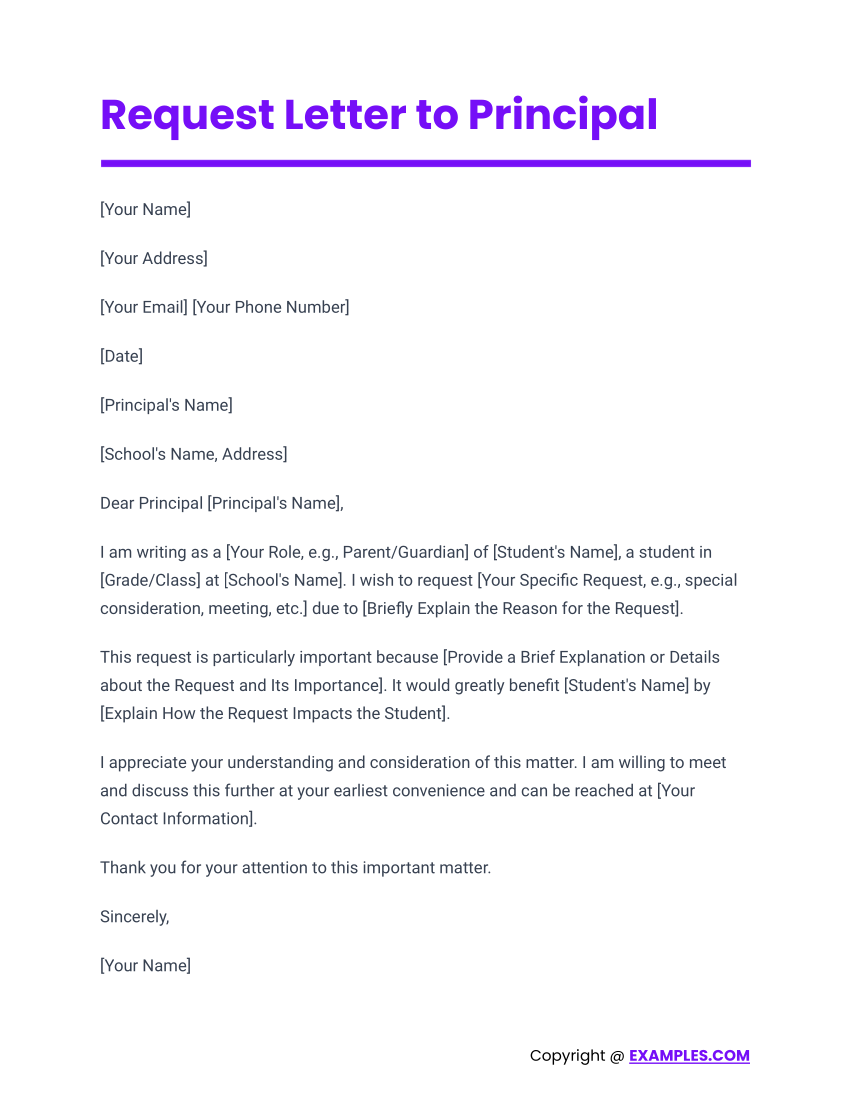
Request Letter For Job
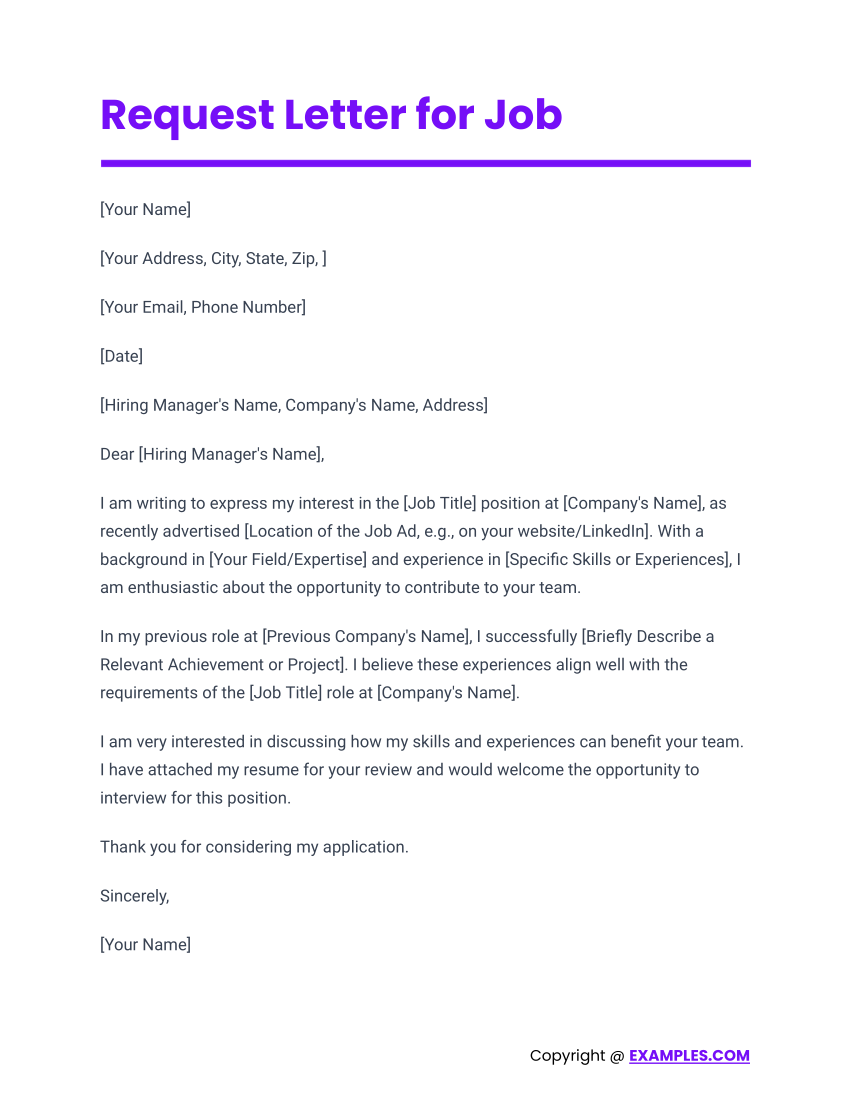
Restaurant Rent Reduction Request Letter Example
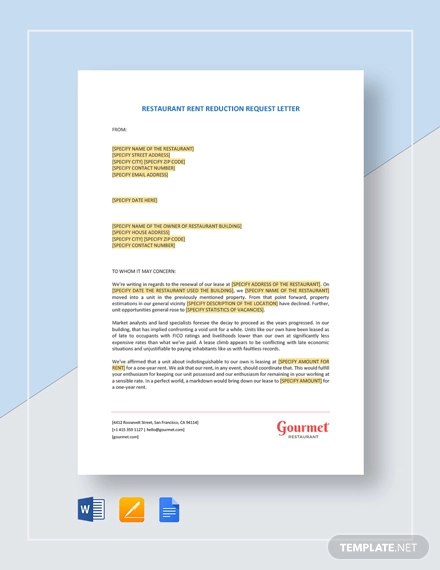
Vacation Request Letter
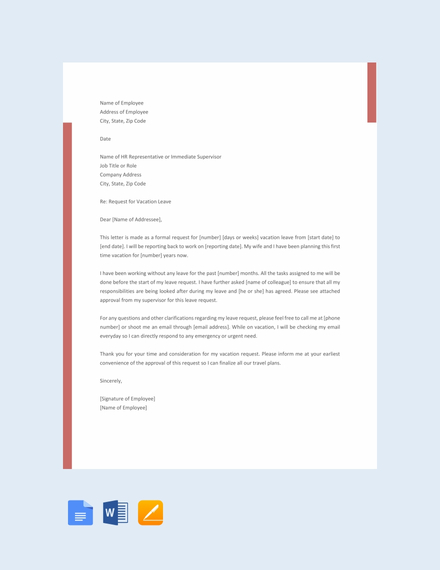
Donation Request Letter
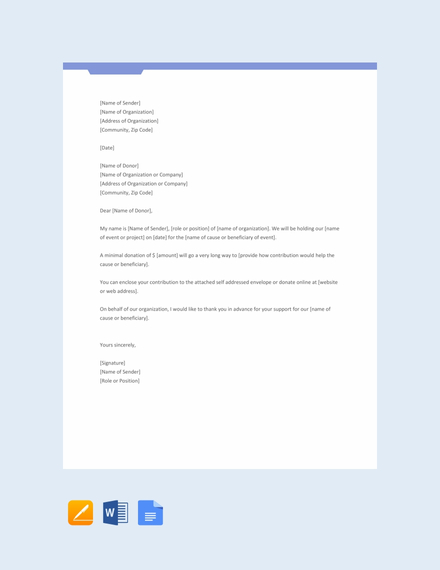
Appointment Request Letter Template

Contract Request Letter
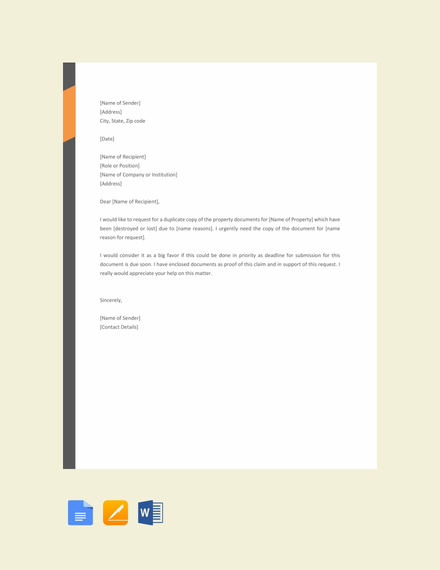
Department Change Request Letter
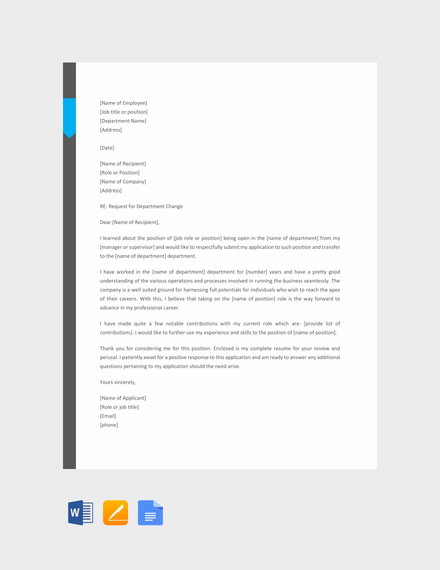
Formal Interview Request Letter
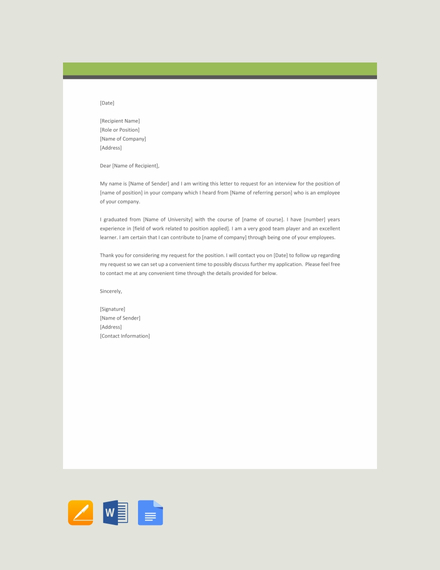
Information Request Letter

Internship Request Letter Template
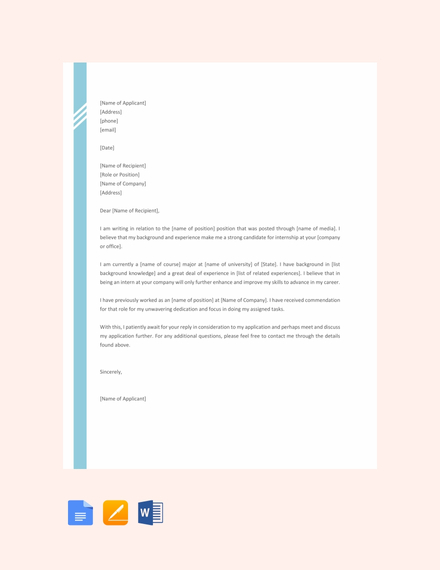
Loan Request Letter
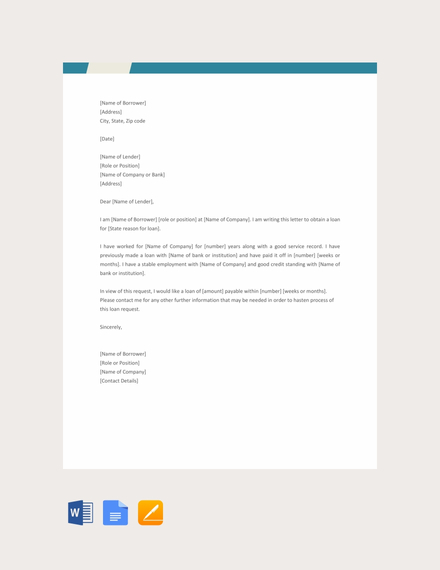
Job Transfer Request Letter for Personal Reason
Sample Donation Request Letter for Non-Profit Template
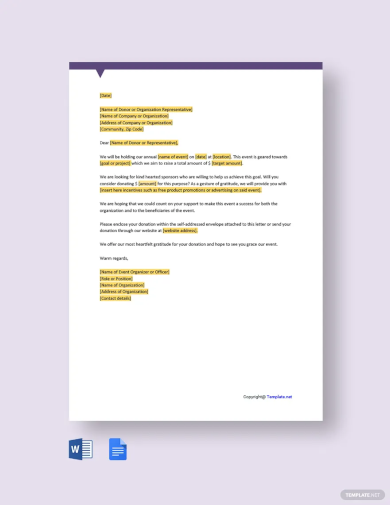
Sponsorship Request Letter for Event Template
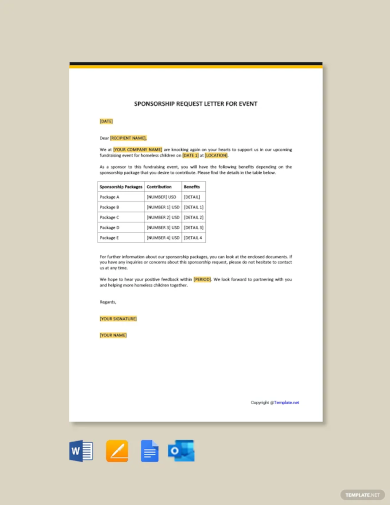
Editable Donation Request Letter Template
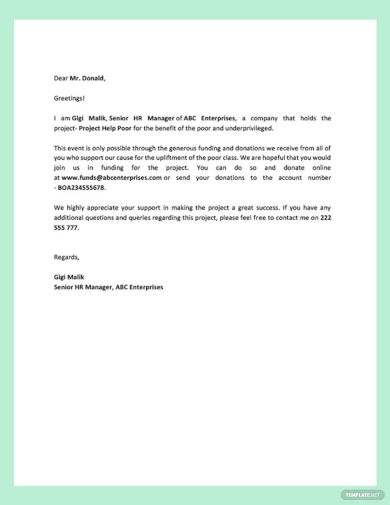
Printable Donation Request Letter Template
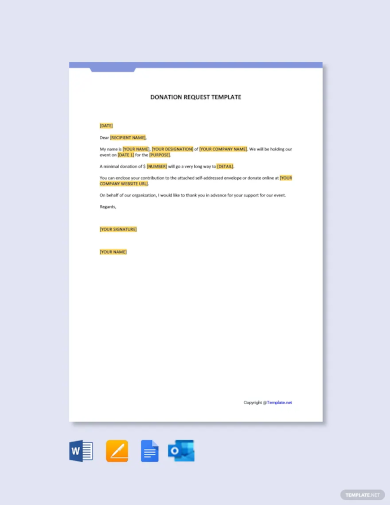
Donation Request Letter Format Template
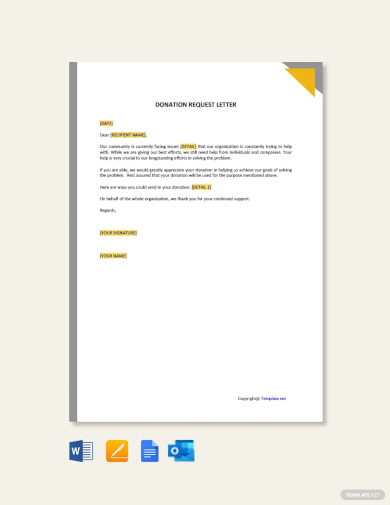
Formal Request Letter Template
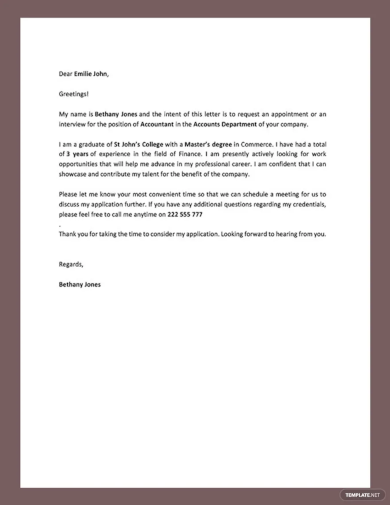
Sponsorship Request Letter Template
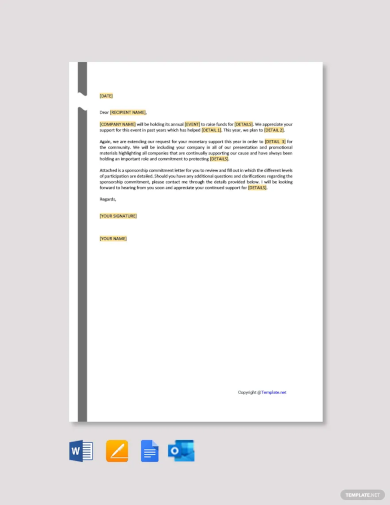
Transfer Request Letter Template
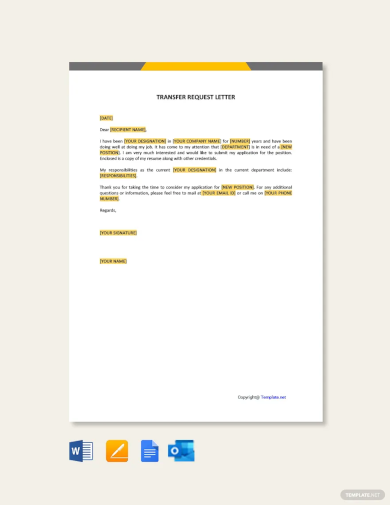
Fund Transfer Request Letter To Bank Template
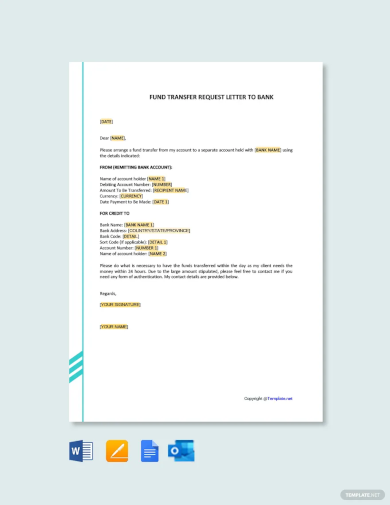
Training Proposal Request Letter Template
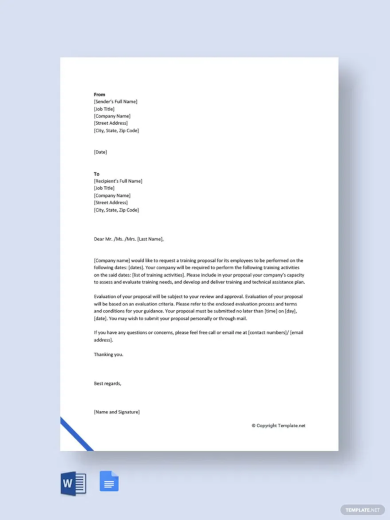
Short Permission Request Letter Template
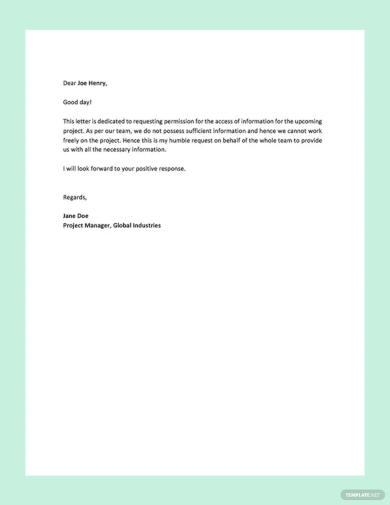
Professional Request Letter Template
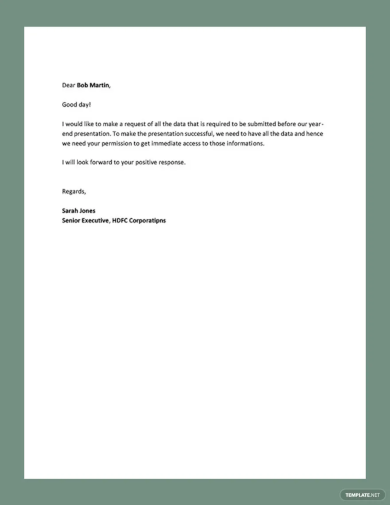
Request Letter for Approval Template
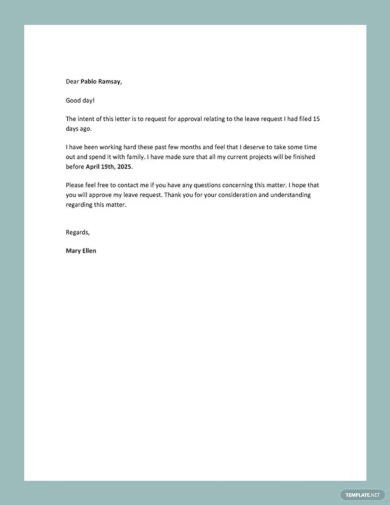
School Formal Transfer Request Letter Format Template
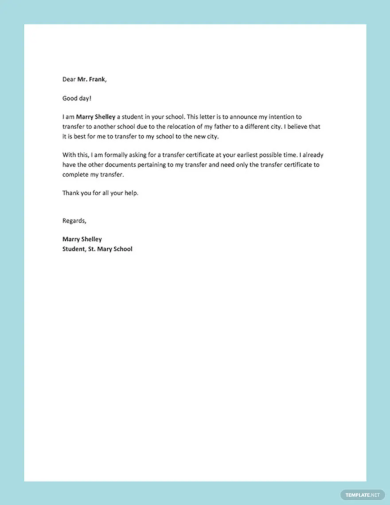
Simple Request Letter Format Template
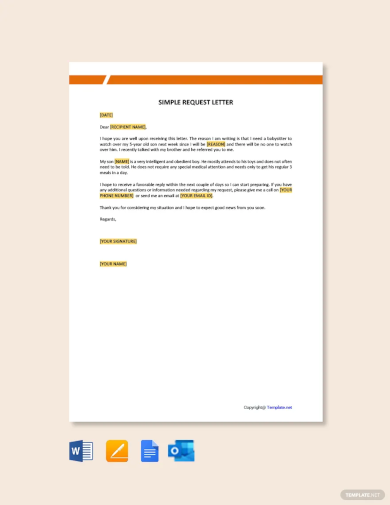
Sample Request Letter to Principal
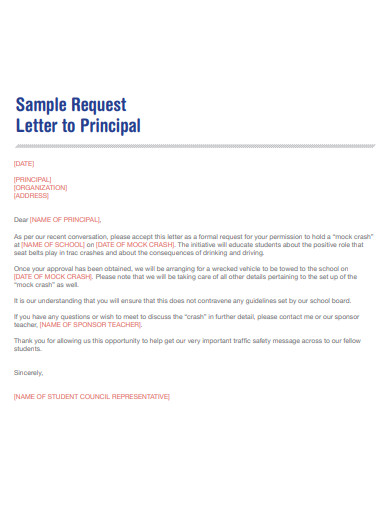
Amendment Request Letter
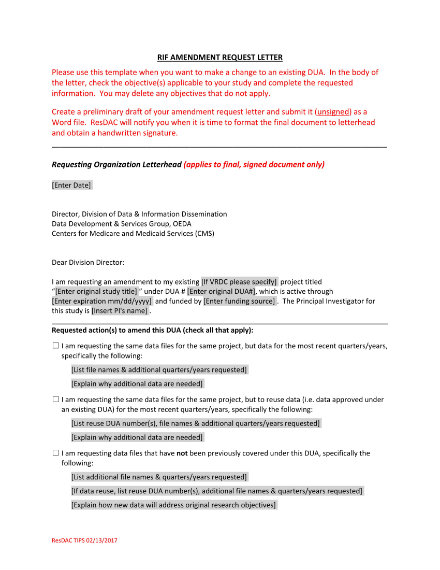
Permission Request Letter
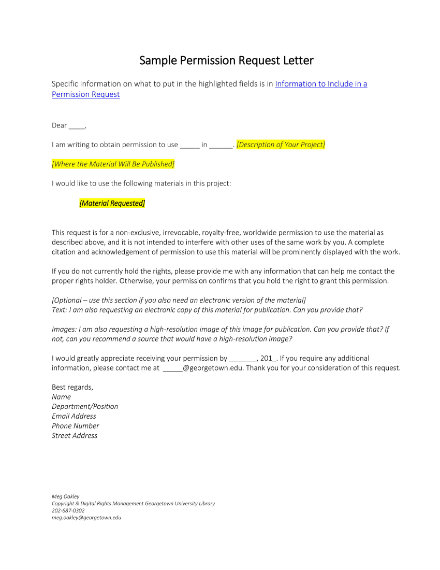
Letter Requesting Support Example
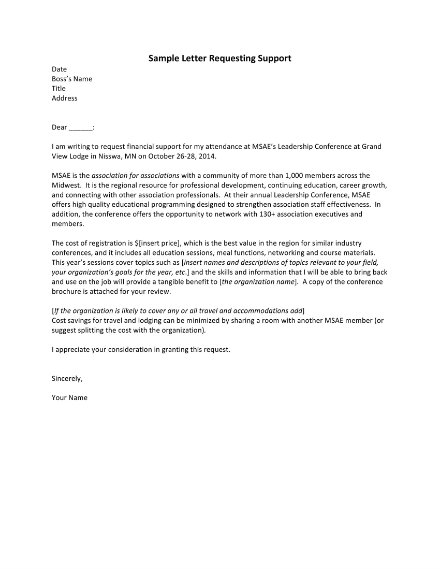
Access or Copy of Public Record Request Letter
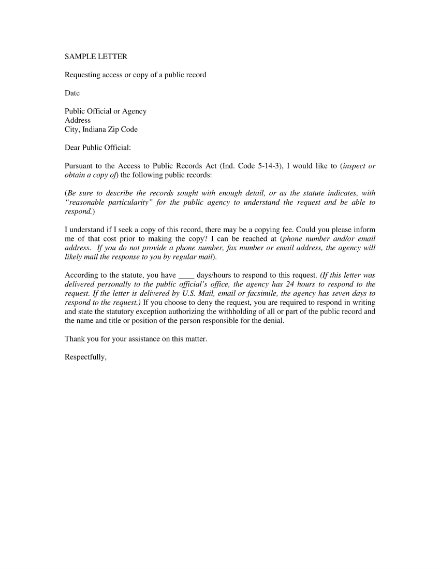
Official Meeting Request Letter
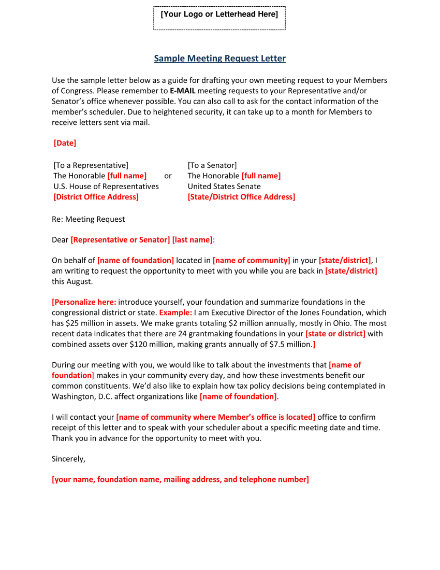
Sample Request Letter for Documents
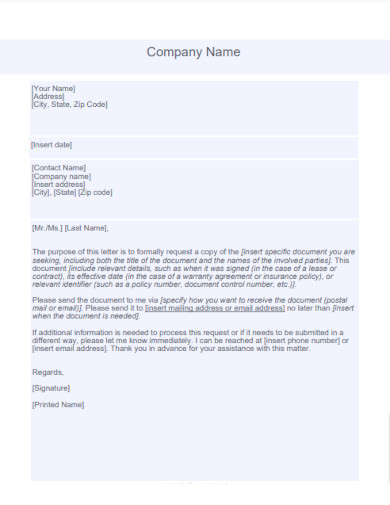
Steps in Writing a Request Letter
As you now know, a request letter can help you get what you need, e.g. schedule an interview, borrow official equipment or materials, acquire information, etc. Thus, it is important to be able to write a request letter that will clearly and coherently convey your message. Listed below is an easy guide on how you can write an effective request letter:
1. Write out the full mailing address of the sender:
The return address of the letter should be on the upper most part of the paper, left or right side depending on the format followed. It should contain the printed name of the sender followed by the complete mailing address and contact information such as email address and/or phone number.
2. Date when the letter is written:
It is important to include the date when you have written the letter in order for you to keep track when of the days when the recipient responds. Aside from that, it helps the recipient of the letter take note of the day when the letter arrives on their end, it can help set priorities of the letters they receive, in a way.
3. Include full mailing address of the recipient:
It is important to write out the complete mailing address of the recipient or receiver of the letter to make sure the letter is given to the right person or company. In this sense, the inside address must contain the name of the receiver, mailing address, and contact information. Regardless of letter format, the inside address is commonly placed on the left side of the paper.
4. Indicate subject line:
The subject line of your letter must briefly convey the topic to be discussed further in the letter. The subject line is usually only a few words long. As indicator, you can include the word Subject before stating the subject of the letter. The terms Re and In re should only be used for legal correspondence.
5. Write out salutation:
The salutation of your letter must be accurate and courteous. Regardless if the letter is formal or informal, the salutation “Dear” must be used. After the salutation “Dear,” the preferred title and last name of the direct letter recipient must be written. For a formal business letter, the correct punctuation after the salutation is a colon (:).
6. Briefly state introduction:
The introduction of your letter must be able to clearly and briefly explain the purpose of the letter. You should immediately write out your intention to request something from the recipient. In the same paragraph, you should specify the date as well as the reason for your request as well.
7. Include supporting details, if necessary:
In some cases, supporting details are not really that necessary for request letters. However, in other circumstances the recipient may require it. In this case, write the supporting details on the paragraph following the introduction. The supporting details can be pertinent information regarding how a decision to give a request was made, reason/s why the request is completely necessary, what the requested material or information will be used for, etc.
8. Politely conclude your letter:
As a conclusion of your request letter, make sure you express gratitude to the recipient for the taking their time to consider your request. In the same paragraph, you can also include or reiterate your contact information should they need to discuss your request further with you.
9. Include a complimentary close and signature line:
For the same reason why there is a salutation, there should also be a complimentary close for your request letter. It should convey your professionalism and courtesy. A few spaces after the complimentary close, the signature line should come after. It should contain your printed name and title/designation.
10. Indicate enclosure and copy notations:
If you have another document attached with your request letter, you should indicate it by using the enclosure notation. And if you have given another copy of the letter to someone, say the office secretary, indicate by putting a copy notation; for example: “CC: name of the person:” after the enclosure notation.
Tips in Writing a Request Letter
A well-written request letter will help you ensure you get your request approved. Your recipient can easily understand the purpose and necessity of your letter if your focus on coherently writing its content. In regards to how you can ensure you can achieve your intentions with your request letter, here are some tips in writing an effective request letter:
- Include factual details, but avoid dramatizing the whole situation.
- Be specific with the details or information you include.
- Avoid irrelevant details; always stick to the point.
- Do not manipulate your recipient or reader into approving your request.
- Aim to be persuasive through the words you use and argument your present.
- Make sure your request is reasonable.
- Be brief and direct.
- Always be professional and courteous all throughout your letter.
- Proofread and edit your letter accordingly. Avoid sending letter with error/s.
- Keep a copy of your request letter in the event that the recipient loses it.
Types of Request Letter
A request letter is a useful document that you can use to acquire things and information. It can be used when you are in the academe or corporate world. In this sense, you need to know when a request letter can be more useful. Hence, listed below are some of the types of a request letter:
1. Interview Request Letter: As the name would suggest, this request letter is used to request for an interview most especially for job interview. This request letter includes the specific department and position he/she wants to be interviewed for and his/her personal referrals.
2. Raise or Promotion Request Letter: This request letter is sent to your employer or supervisor with the intention to request for a salary raise or promotion. The letter should provide the recipient with convincing information as to why he/she is qualified for a raise or promotion.
3. Information Request Letter: An information request letter politely asks the recipient to give the information that is needed by the sender. This letter also explains why there is a need to acquire such information and that he/she is willing to pay the necessary fees in exchange for the requested information.
4. Third-Party Request Letter: This request letter asks a third party for help. For example, when the sender needs a letter of recommendation for a scholarship or work, he/she sends a request letter to his/her references to write a him the recommendation letter he/she needs. The sender should provide all the necessary details in the request letter.
Request Letter Sizes
Just like in any formal business letter, the standard paper size to follow is 8.5″ × 11″. Meanwhile, government offices commonly use paper with the size of 8″ × 10.5″. However, it is important to inquire to the office you are sending the letter to about what size of paper they prefer that you use.
How do I write a request letter?
1. Format:
- Your contact information: Include your name, address, phone number, and email address at the top of the letter.
- Date: Include the date when you’re writing the letter.
- Recipient’s information: Below your contact information, provide the recipient’s name, title, organization, and address.
2. Salutation:
Use a formal salutation, such as “Dear [Recipient’s Name].” If you don’t know the recipient’s name, use a general salutation like “To Whom It May Concern.”
3. Introduction:
- Begin by introducing yourself and providing a brief background or context for your request. Mention any mutual connections or previous correspondence if applicable.
- Clearly state the purpose of your letter, making it evident that you are making a request.
4. Request Details:
- Be specific about what you are requesting. Clearly state what you need and why you need it.
- Provide any relevant details or background information that might help the recipient understand the importance or context of your request.
- If applicable, include any deadlines or timeframes for when you need the request to be fulfilled.
5. Justification:
- Explain why your request is important or necessary. This could be based on personal reasons, the potential benefits for both parties, or the impact it may have on a larger group or cause.
- Highlight any relevant qualifications, achievements, or experiences that support your request.
6. Politeness and Respect:
- Maintain a courteous and respectful tone throughout the letter. Express gratitude for the recipient’s time and consideration.
- Avoid demanding or entitled language, and instead use phrases like “I kindly request,” “I would greatly appreciate,” or “I humbly ask for your assistance.”
7. Closing:
- In the closing paragraph, reiterate your request and thank the recipient for their attention.
- Express your willingness to provide any additional information or assistance if needed.
- Use a closing phrase like “Sincerely,” “Yours truly,” or “Best regards.”
How do I write a letter of request for a document?
1. Format the Letter:
Use a formal business letter format. Include your contact information at the top, the date, the recipient’s information, and a formal salutation.
2. Begin with a Polite Greeting:
Start the letter with a polite salutation, such as “Dear [Recipient’s Name].” If you don’t know the recipient’s name, you can use “To Whom It May Concern.”
3. State Your Request:
In the first paragraph, clearly and concisely state the purpose of your letter. Mention that you are requesting a specific document. For example: “I am writing to request a copy of my academic transcripts from [Name of School/University].”
4. Provide Specific Details:
In the next paragraph, provide specific details about the document you are requesting, including any necessary information that will help the recipient locate the document. Be sure to include:
- Your full name, student ID or reference number (if applicable).
- The document’s title or description.
- The dates or periods for which you need the document.
- Any other relevant information that will assist the recipient in fulfilling your request.
5. Explain the Purpose:
Briefly explain why you need the document. This could be for job applications, educational purposes, legal matters, or any other reason. Providing context can be helpful.
6. Mention Any Deadlines:
If you have a specific deadline for receiving the document, mention it in the letter. Politely request that the document be provided by that date.
7. Express Gratitude and Politeness:
In the closing paragraphs, express gratitude for the recipient’s assistance and be courteous. For example: “I would greatly appreciate your prompt attention to this matter.”
8. Closing and Signature:
Close the letter with a formal closing phrase like “Sincerely,” “Yours faithfully,” or “Best regards,” followed by your signature (if it’s a physical letter). In an email, you can simply type your name.
What is an example of a formal request?
[Your Name] [Your Address] [City, State, ZIP Code] [Your Email Address] [Your Phone Number] [Date]
[Recipient’s Name] [Recipient’s Title] [Company or Organization Name] [Company Address] [City, State, ZIP Code]
Dear [Recipient’s Name],
I hope this letter finds you well. I am writing to formally request your assistance in providing a professional reference for me as I pursue a new opportunity with [Target Company Name]. I have recently applied for the [Position Name] role, and your perspective on my qualifications and work experience would be of great value.
As you may recall, we had the opportunity to work together for [Duration of Your Professional Relationship] at [Previous Company Name]. During that time, I greatly appreciated the mentorship and guidance you provided, which contributed significantly to my professional growth. Your insights into my work ethic, collaboration skills, and expertise in [Specific Skills or Areas] would carry significant weight in the evaluation process.
I kindly request that you provide a reference that highlights my abilities, dedication, and the positive impact I made during our collaboration. You may use any specific projects or achievements we worked on together as examples to support your recommendation.
If it’s convenient for you, I can provide any additional information or answer any questions you may have related to the reference request. The deadline for submitting references is [Specify Deadline], and I would be grateful if you could complete the reference by that date.
I would like to express my sincere gratitude for your time and support in this matter. Your reference will play a pivotal role in my pursuit of this exciting opportunity.
Please feel free to contact me at [Your Phone Number] or [Your Email Address] if you require any further details or have any questions. I look forward to your positive response.
Thank you for considering my request.
Sincerely,
[Your Name]
How do you end a letter of request?
- Sincerely: This is a widely accepted and formal way to close a letter. It’s appropriate for most types of requests.
- Yours truly: Similar to “Sincerely,” this is a formal and polite closing that can be used for various types of requests.
- Best regards: This closing is a bit less formal than “Sincerely” and can work well for professional requests, especially in business settings.
- Kind regards: This closing is friendly and appropriate for formal or semi-formal requests.
- Respectfully: This is a formal closing that is suitable for more serious or respectful requests, such as formal business or official letters.
- Yours faithfully: This closing is often used in formal business or legal contexts, particularly in the UK.
- Thank you: If you want to convey your gratitude explicitly, you can simply end with “Thank you” followed by a comma.
After your chosen closing phrase, leave a space and then type or write your name. If it’s a physical letter, you can sign your name by hand above your typed name. If it’s an email, you can simply type your name below the closing phrase.
Here’s an example of how to end a letter of request using the “Sincerely” closing:
Sincerely,
[Your Name]
How to Write the Different Types of Request Letters?
Formal Request Letters:
- Use a formal business letter format.
- Start with a polite salutation, such as “Dear [Recipient’s Name].”
- Clearly state the purpose of your letter in the opening paragraph.
- Provide detailed information about the request, including any relevant background or context.
- Be specific and concise in your language.
- Include any necessary details, such as dates, reference numbers, and supporting documents.
- Explain the importance of your request and how it will benefit both parties, if applicable.
- Express gratitude and politeness throughout the letter.
- Close the letter with a formal closing phrase like “Sincerely” or “Yours faithfully.”
2. Informal Request Letters:
- Use a more casual tone, but maintain politeness and clarity.
- Start with a friendly greeting or the recipient’s name.
- Begin with a brief introduction or context for your request.
- Clearly state your request in a straightforward manner.
- Include any necessary details or information related to the request.
- Offer to reciprocate the favor or express gratitude for the recipient’s help.
- Close with a friendly closing phrase like “Thanks,” “Best wishes,” or “Take care.”
3. Employment-related Request Letters:
- Follow a formal or semi-formal business letter format, depending on the context.
- Address the recipient by name and title, if known.
- Clearly state the purpose of your letter and the specific request (e.g., job application, reference request, leave request).
- Provide relevant details such as your qualifications, achievements, and the reason for the request.
- Express enthusiasm for the opportunity or understanding of company policies.
- Close with a formal or friendly closing phrase depending on the formality of the letter.
4. Fundraising or Donation Request Letters:
- Use a formal business letter format.
- Begin with a polite greeting and a personal touch, if applicable.
- Provide a compelling introduction explaining the purpose of your request and the cause or project you’re seeking support for.
- Clearly outline the need for funds and how the recipient’s contribution will make a difference.
- Include specific details about how to donate, payment methods, and deadlines.
- Encourage the recipient to take action and express the positive impact of their contribution.
- Close with a heartfelt closing phrase and an invitation for further communication.
How to Write a Request Letter of Recommendation?
1. Choose the Right Person:
Select a person who knows you well and can speak to your qualifications and character. This could be a former employer, supervisor, teacher, or mentor.
2. Format and Structure:
Use a formal business letter format.
Include your contact information, the date, the recipient’s information, and a formal salutation.
3. Introduction:
Start the letter by explaining your purpose. Mention that you are applying for a specific opportunity (job, college, scholarship) and that you need a recommendation.
4. Provide Context:
Briefly describe your relationship with the person you’re writing to. Mention how and when you worked together or the capacity in which you know each other.
5. Request for the Recommendation:
Politely ask if they would be willing to write a letter of recommendation for you. Be clear about what you’re requesting. For example: “I am writing to request if you would be willing to write a letter of recommendation on my behalf.”
6. Explain Why:
Briefly explain why you are asking this person for a recommendation. Discuss the opportunity you are pursuing and why you believe they are the right person to vouch for your qualifications.
7. Provide Information:
Include any relevant information about the opportunity you are applying for, such as a job description or program details. This will help the recommender understand what to emphasize in the letter.
8. Offer Assistance:
Show your appreciation and offer to provide any additional information they may need. Mention your contact details for their convenience.
9. Set a Deadline:
Mention the deadline by which you need the recommendation. Be sure to give the person enough time to write the letter.
10. Express Gratitude:
Thank the person for their time and consideration. Express your gratitude for their support.
11. Formal Closing:
Close the letter with a formal closing phrase like “Sincerely,” “Yours faithfully,” or “Best regards.”
12. Signature:
Sign the letter by hand if it’s a physical letter. If it’s an email, you can simply type your name below the closing phrase.
How do I write a letter of request for permission?
1. Format the Letter:
Use a formal business letter format. Include your contact information, the date, the recipient’s information, and a formal salutation.
2. Introduction:
Begin the letter with a polite greeting, such as “Dear [Recipient’s Name].”
3. State the Purpose:
Clearly state the purpose of your letter in the opening paragraph. Explain why you are writing and what you are requesting permission for.
4. Provide Context:
Offer a brief explanation of the context for your request. Mention why this permission is necessary and the importance of the matter.
5. Detailed Request:
Provide a detailed description of what you are requesting permission for. Include specifics like the dates, times, and locations (if applicable).
6. Explain How You Will Comply:
Explain how you will ensure compliance with any rules, regulations, or terms associated with the permission. This reassures the recipient that you are responsible and respectful of their concerns.
7. Highlight Benefits:
Explain the benefits of granting permission, both to you and to the recipient or the larger community. This can help persuade the recipient to grant permission.
8. Offer Additional Information:
If there are any supporting documents, plans, or details that will help the recipient make an informed decision, mention them in the letter and offer to provide these documents upon request.
9. Closing Request:
Politely request the permission you need. Use clear and respectful language, such as “I kindly request permission to…”
10. Express Gratitude:
Express gratitude for the recipient’s consideration and time. Thank them for taking the time to review your request.
11. Formal Closing:
Close the letter with a formal closing phrase, such as “Sincerely,” “Yours faithfully,” or “Best regards.”
How to write a letter of request for sponsorship?
1. Research Your Target Audience:
Identify potential sponsors that align with your cause or event. Understand their values, goals, and how your initiative can benefit them.
2. Format the Letter:
Use a formal business letter format. Include your contact information, the date, the recipient’s information, and a formal salutation.
3. Introduction:
Begin with a polite greeting, such as “Dear [Recipient’s Name].”
4. Provide an Engaging Introduction:
In the opening paragraph, provide a concise and compelling introduction that explains the purpose of your letter and your organization or event.
5. Explain Your Cause or Event:
Offer a clear and concise description of the cause, event, or project you are seeking sponsorship for. Include its objectives, goals, and expected outcomes.
6. Highlight Benefits for the Sponsor:
Explain how sponsoring your initiative will benefit the sponsor. Discuss the visibility, marketing opportunities, goodwill, or any other advantages they will gain from the association.
7. Specify the Request:
State the specific type and amount of sponsorship you are seeking. Be precise and realistic in your request. For example, if you’re requesting financial support, mention the exact amount or range.
8. Provide Supporting Details:
Offer details about the sponsorship levels, benefits, or packages available. Explain how the sponsor’s contribution will be acknowledged, such as logo placement, naming rights, or other promotional opportunities.
9. Include a Call to Action:
Encourage the recipient to take action. Clearly express your desire for their support and how they can respond, whether it’s by contacting you, visiting a website, or signing an agreement.
10. Express Gratitude:
Show appreciation for the recipient’s consideration and time. Thank them for their interest in your initiative and their potential support.
11. Formal Closing:
Close the letter with a formal closing phrase, such as “Sincerely,” “Yours faithfully,” or “Best regards.”
How To Write A Request Letter?
To write a request letter, use a formal format with a clear introduction, polite tone, specific request, explanation, and gratitude, ensuring it’s concise and well-organized.
What is letter request form?
A letter request form is a document used to collect information required to draft a formal request letter. It typically includes contact details, request details, and a space for additional comments.
What type of letter is ‘request’?
A ‘request’ letter is a formal document written to seek permission, assistance, information, or support from someone or an organization. It’s courteous and persuasive, often used in professional or personal settings.
Is a request letter important?
In some cases, there might be no need for a request letter especially when offices only require you to fill out a request form. However, there are also instances when an official request letter is needed to even consider what you are requesting. In this sense, a request letter is still important and relevant up to this day.
Should there be attachments to a request letter?
Depending on what you request for, there might be a need to attach additional supporting documents to your request letter. You can provide your receiver with supporting documents like a summary or analysis of a survey, proposals, plans, and other official documents that will explain the need for what is being requested.
When do you send a business request letter?
You send a business request letter when you need to make formal requests in a professional context, such as asking for information, collaboration, permission, support, or assistance.


